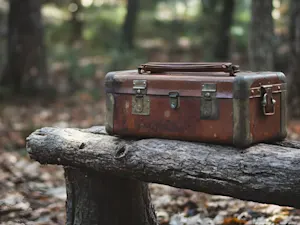
Dead British Man Now Waiting to Wake Up
A man from the U.K. has been transported thousands of miles after death — not to a burial site or crematorium, but to a cryogenic facility in Michigan, where his body now rests at -196C in a tank of liquid nitrogen. Known publicly only as Patient 268, he joined over 250 others who've taken a high-stakes gamble on future science bringing them back to life. This extraordinary journey highlights the growing fascination — and controversy — surrounding cryonics, a field that promises a possible revival from clinical death. Patient 268's story is one of many quietly unfolding in cryogenic vaults across the United States.
What Is Cryonics?
Cryonics is the process of preserving a human body at ultra-low temperatures after legal death in the hope that future medical technology will be able to revive them. The technique centers around halting biological decay by rapidly cooling the body and storing it indefinitely in liquid nitrogen at -196C — or -320F — inside large tanks called cryostats.
After a person is declared dead, cryonics teams act fast. In the case of Patient 268, the nonprofit Cryonics UK conducted an initial cooling using dry ice while international transport permits were arranged. His body was flown 3,700 miles to the United States, arriving at Detroit Metro Airport on Feb. 27 — 16 days after his death.
From there, he was transported to the Cryonics Institute (CI) in Michigan and placed into a computer-controlled cooling chamber for 25 hours before being sealed in long-term storage.
Why Choose Freezing Over a Funeral?
Supporters of cryonics believe the technology of tomorrow — such as nanomedicine, AI-assisted surgery, or cellular regeneration — may one day be advanced enough to repair and revive people currently considered medically dead.
Patient 268 is part of a growing network of believers. In fact, the U.K. has the largest number of CI members outside the United States, with 128 Britons signed up for preservation or support roles within the organization.
At the Cryonics Institute, bodies are preserved in one of two facilities. The group, founded in 1976, now houses more than 250 "patients" — a term they use to describe the deceased individuals in storage. Clients range from retirees and professors to chefs and students. Even pets are preserved alongside their human companions.
What Does It Cost?
Cryonics isn't free, but it's not as out-of-reach as you might think. CI offers a tiered membership system. The most affordable plan requires a $1,250 lifetime membership and $28,000 for human preservation — often paid for through life insurance.
For those who prefer to pay annually, a $120 per year plan is available, with preservation costing $35,000. There's also a post-mortem, non-member option for $45,000. Each case includes transport, preparation, and indefinite cryostorage.
Is There Any Scientific Basis?
Cryonics is not recognized as a proven medical practice. Currently, no one has ever been successfully revived after being cryopreserved. The process faces several major scientific hurdles — most notably, preserving and restoring brain structure and function without damage.
Advocates argue that skeptics once doubted the viability of heart transplants, organ regeneration, and other medical milestones that are now routine. For them, cryonics is a rational long shot: it offers no guarantees, but burial or cremation offers zero chance of return.
Even if revival becomes technically feasible, legal, ethical, and logistical barriers would remain. Scientists would need to address memory retention, physical regeneration, and legal identity across vast spans of time.
Still, technological optimism drives the movement. Proponents point to advances in regenerative medicine, stem cell therapy, and AI as promising indicators of future capabilities.
Who Else Is on Ice?
Patient 268 joined more than 250 people already in suspension at CI, including the institute's very first case, Rhea Ettinger, who has been stored there since 1977.
These patients come from all over the world, drawn by the hope of waking up in a time when today's incurable diseases — or even death itself — might be treatable.
While cryonics remains controversial, the list of participants continues to grow. One of the U.K.'s most outspoken supporters, 87-year-old Alan Sinclair, has said publicly that he sees no downside to taking the chance.
The Takeaway
Cryonics walks a strange line between futuristic science and speculative faith. For believers like Patient 268, it represents a final act of hope — an open door to a time far beyond today.
Whether the gamble ever pays off remains to be seen. But for now, one more individual is waiting in frozen stillness, betting on a future that hasn't yet arrived.
References: British man's body flown 3,700 miles to 'deep freeze' chamber for chance of reawakening | Brit frozen in liquid nitrogen chamber for chance of reawakening in far future























